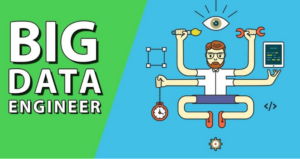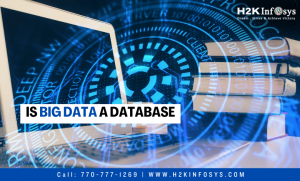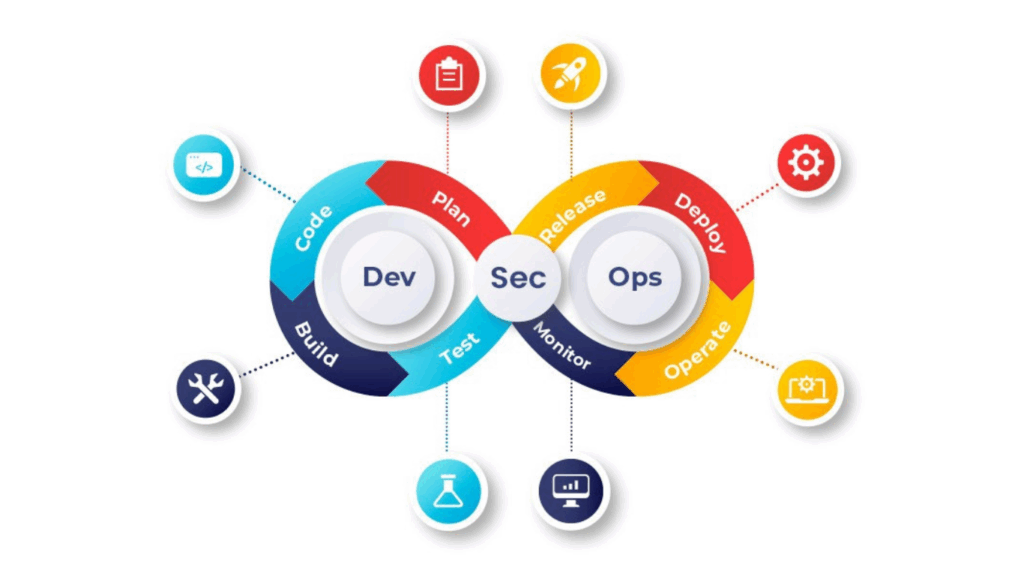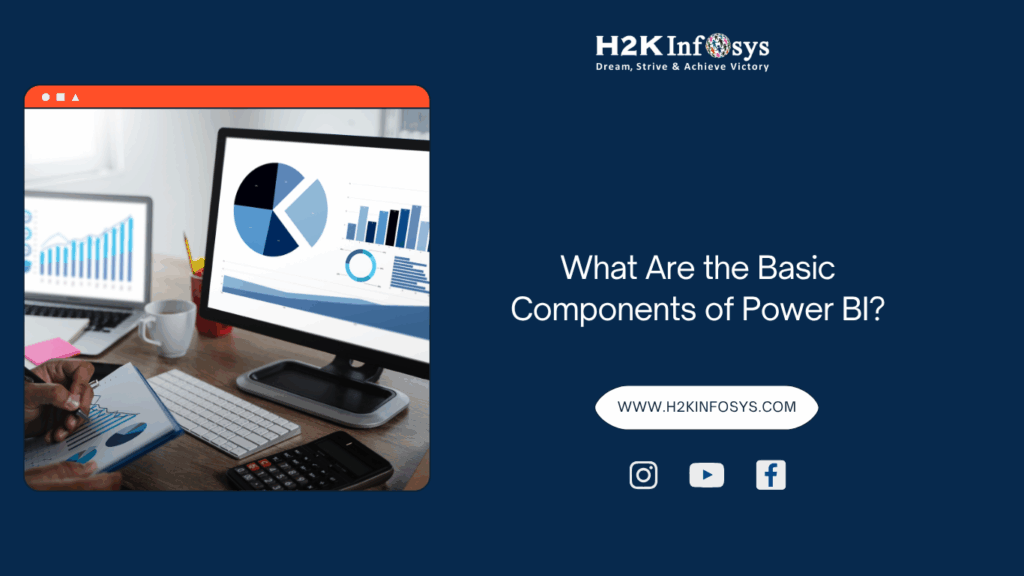Big data means a large amount of data which comes from various data sources which has different format. Big data is more collection of different data sets. It is an important assets which can be used to obtain enumerable benefits.
Three formats of Big data:
There are three formats of big data. They are:
- Structured: fully organised data format with a fixed schema.
- Semi-structured: partly organised data which does not have a fixed format.
- Unstructured data: unorganised data without known format.
Characteristics of Big data:
1. Validity: It corrects data
2. Variability: It has dynamic behaviour
3. Volatility: Tendency to change in time
4. Vulnerability: it is vulnerable to breach the attacks.
5. Visualisation: it is about using the data.
Big data analytics is largely used by companies to improve the growth and development. There are multiple tools for big data processing such as Hadoop, Pig, hive, Cassandra, HCatalog etc. Data is mostly produced by people in organisations. The data usually has a specified structure. It is nothing but basis of records on money paid, deliveries made and employees hired etc.
Here the data processing must manage lots of data, speed of data arriving, many different sources of data arriving in different formats. The more data you have, more is the chance of getting insights from it. The size of big data makes it impossible to use the manual and conventional computing methods. Big data analytics is based on data mining to shift through data with different patterns and different relationships, machine learning can handle to change new data, to adapt and enrich models, text analytics and natural language processing to analyze free form text speech.
Big data analytics tools:
The Big data analytics tools can be grouped as:
Descriptive analytics for finding what happened,
Diagnostic analytics for explaining,
Predictive analytics to suggest what will likely to happen and
Prescriptive analytics to tell users what to do.
An example of big data analytics:
Consider a company runs big data on its past sales data. It sees a demand has been rising in certain regions for one of its product lines. From social data and CRM company also find that customers are buying products by marketing data and analytics the sales potential prediction in each region where the customer might replace current productivity.
Big data benefits:
Big data has various benefits like:
- It can utilise outside intelligence while taking important decisions.
- Access to social data from various search engines is making organisations to fine tune their business strategies.
- Improved customer service
- Traditional customer feedback systems are getting replaced by new systems which are designed with big data technology.
- Big data and available all natural language processing technologies are being used to read and evaluate consumer responses.
- They have ability to identify early risk of the product.
- And also can identify better operational efficiency.
For example, big data is used in many companies which provides valuable insights to their customers that can be used to improve marketing campaigns and techniques in order to increase customer engagements and conversion rates. Furthermore, Big data can be used by medical researchers to identify disease risk factors and by doctors to diagnose the illness and conditions in individual patients.
In the energy industry, big data is used which helps oil and gas companies to identify potential drilling and observe the pipeline operations. Financial services companies use Big data systems for risk management and for real time analysis of market data. Manufacturers and also transportation companies rely on big data to manage their supply chain.
Volume is the major characteristics of big data. A big data environment doesn’t necessarily have to contain large amount of data contain but most will have because of the nature of the data being collected and stored. Big data applications usually include multiple data sources which may not be integrated.






























17 Responses
Big data is a collection of different data sets. Financial services and oil and gas industries use to manage their functions. Big data comes in three formats, structures, semi structured and unstructured.
The characteristics of big data are:
Validity: It corrects data
Variability: It has dynamic behavior
Volatility: It changes in time
Vulnerability: Vulnerable to breach of attacks
Visualisation: about using the data
There are different tools for analyzing big data:
Descriptive, Diagnostic, Predictive and Prescriptive
The benefits of big data are:
• It can use outside intelligence to make important decisions
• Access social data from search engines to help organizations fine tune their business strategies
• Improves customer service
• Identify risks early.
• Identify better operational efficiency.
Big data is a vast amount of data from different sources with different formats. It uses descriptive, diagnostic, predictive and prescriptive analytical tools. It is used by big companies to improve their growth and development.
Big data , gathering data from different sources(structure/unstructured/semi-structured) gives lot of potential for companies to mine the data and give a picture of their current business position, gives predictions of their business and potential for strategic growth.
Big data means a large amount of data which comes from various data sources which has different format. Big data is more collection of different data sets
There are three formats of big data. They are:
Structured: fully organised data format with a fixed schema.
Semi-structured: partly organised data which does not have a fixed format.
Unstructured data: unorganised data without known format.
Characteristics of Big data:Big data analytics is largely used by companies to improve the growth and development. There are multiple tools for big data processing such as Hadoop, Pig, hive, Cassandra, HCatalog etc. Data is mostly produced by people in organisations. The data usually has a specified structure. It is nothing but basis of records on money paid, deliveries made and employees hired!
1.Big data means a large amount of data which comes from various data sources which has different format. Big data is more collection of different data sets.
2.There are three formats of Big data. They are:
Structured: fully organised data format with a fixed schema.
Semi-structured: partly organised data which does not have a fixed format.
Unstructured data: unorganised data without known format.
3.Big data has various benefits like:
It can utilise outside intelligence while taking important decisions.
Access to social data from various search engines is making organisations to fine tune their business strategies.
Improved customer service
They have ability to identify early risk of the product.
And also can identify better operational efficiency.
The term “big data” refers to data that is so large, fast or complex that it’s difficult or impossible to process using traditional methods– both structured and unstructured.The importance of big data doesn’t revolve around how much data you have, but what you do with it. You can take data from any source and analyze it to find answers that enable 1) cost reductions, 2) time reductions, 3) new product development and optimized offerings, and 4) smart decision making.Big Data Management solutions provide companies the ability to add a variety of data from hundreds of different sources in real time. This means that you can increase the client’s commitment since you can have more effective interactions with them and better marketing proposals, which ultimately lead the company to achieve a longer and more profitable .
Big data means a large amount of data which comes from various data sources with different formats. Big data is a collection of different data sets. The characteristics of big data are validity, variability, volatility, vulnerability, and visualization. There are three formats of Big data. They are structured, semi-structured, and unstructured. Big data has various benefits like it can use outside intelligence while taking important decisions, access to social data from various search engines, improved customer service, traditional customer feedback systems are getting replaced by new systems, big data available in all natural language processing technologies, they have the ability to identify early risk of the product, and they also identify better operational efficiency. Big data applications usually include multiple data sources which may not be integrated.
Big data refers to the large, diverse sets of information that grow at ever-increasing rates. It encompasses the volume of information, the velocity or speed at which it is created and collected, and the variety or scope of the data points being covered.
Big data means a large amount of data which comes from various data sources which has different format. Big data is more collection of different data sets. It is an important assets which can be used to obtain enumerable benefits.
Big data means a large amount of data which comes from various data sources with different format. Big data analytic is largely used by companies to improve the growth and development. Basically there are 3 formats of big data which are Structured- fully organized data with fixed schema, Semi-Structured – partly organized data which does not have a fixed format, and Unstructured data – unorganized data without known format.
Characteristics (5V) of Big Data:
1. Validity: It corrects data.
2. Variability: It has dynamic behavior.
3. Volatility: Tendency to change in time.
4. Vulnerability: it is vulnerable to breach the attacks.
5. Visualization: It is about using the data.
Big data analytic tools:
1. Descriptive analytic for finding what happened.
2. Diagnostic analytic for explaining
3. Predictive analytic to suggest what will likely to happen, and,
4. Prescriptive analytic to tell users what to do.
Benefits of Big Data:
1. It can utilize outside intelligence while taking important decisions.
2. Access to social data from various search engines is making organisations to fine tune their business strategies.
3. Improved customer service.
4. Traditional customer feedback systems are getting replaced by new systems which are designed with big data technology.
5. Big data and available all natural language processing technologies are being used to read and evaluate consumer
responses.
6. They have ability to identify early risk of the product.
7. And also can identify better operational efficiency
Big data means a large amount of data which comes from various data sources which has different format. Big data is more collection of different data sets. It is an important assets which can be used to obtain enumerable benefits.
There are multiple benefits of Big Data:
1.It can utilise outside intelligence while taking important decisions.
Access to social data from various search engines is making organisations to fine tune their business strategies.
2. Improved customer service
3.Traditional customer feedback systems are getting replaced by new systems which are designed with big data technology.
4.Big data and available all natural language processing technologies are being used to read and evaluate consumer responses.
5.They have ability to identify early risk of the product.
6. And also can identify better operational efficiency.
Big data means a large amount of data which comes from various data sources which has different format. Big data is more collection of different data sets. It is an important assets which can be used to obtain enumerable benefits.
Three formats of Big data:
Structured: fully organised data format with a fixed schema.
Semi-structured: partly organised data which does not have a fixed format.
Unstructured data: unorganised data without known format.
Characteristics of Big data:
1. Validity: It corrects data
2. Variability: It has dynamic behaviour
3. Volatility: Tendency to change in time
4. Vulnerability: it is vulnerable to breach the attacks.
5. Visualisation: it is about using the data.
Big data analytics tools:
The Big data analytics tools can be grouped as:
Descriptive analytics for finding what happened,
Diagnostic analytics for explaining,
Predictive analytics to suggest what will likely to happen and
Prescriptive analytics to tell users what to do.
Big data benefits:
It can utilize outside intelligence while taking important decisions.
Access to social data from various search engines is making organizations to fine tune their business strategies.
Improved customer service
Traditional customer feedback systems are getting replaced by new systems which are designed with big data technology.
Big data and available all natural language processing technologies are being used to read and evaluate consumer responses.
They have ability to identify early risk of the product.
And also can identify better operational efficiency.
Big data is defined as a collection of a large amount of data that comes from various data sources with a different formats. The characteristics of big data include validity, variability, volatility, vulnerability, and visualization. There are also multiple tools used in big data processing such as Hadoop, Pig, Hive, Cassandra, HCatalog, etc. Different companies largely use big data to improve their growth and development. Big data has various benefits like:
It can use during taking important decisions.
It helps organizations to make fine-tune their business strategies.
Big data is used to improve customer service.
Big data technology helps customer to get their feedback efficiently.
It is also used to read and evaluate consumer responses.
They can identify the early risk of the product.
And also can identify better operational efficiency.
Big data means a large amount of data which comes from various data sources which have different formats.
There are three formats of big data. They are:
1. Structured: fully organised data format with a fixed schema.
2. Semi-structured: partly organised data which does not have a fixed format.
3. Unstructured data: unorganised data without known format.
Characteristics of Big data:
1. Validity: It corrects data
2. Variability: It has dynamic behaviour
3. Volatility: Tendency to change in time
4. Vulnerability: it is vulnerable to breach the attacks.
5. Visualisation: it is about using the data.
Big data analytics is largely used by companies to improve the growth and development. There are multiple tools for big data processing such as Hadoop, Pig, hive, Cassandra, HCatalog etc. Data is mostly produced by people in organisations. The data usually has a specified structure. It is nothing but the basis of records on money paid, deliveries made and employees hired etc.
Big data means a large amount of data of data which comes from various data sources which has different format.
There are three formats of big data. They are:Structured: fully organised data format with a fixed schema.Semi-structured: partly organised data which does not have a fixed format.Unstructured data: unorganised data without known format. Big data charracterstics are: validaity, vaiability, volatility, vulnerability and visualization.There are various benefits of using big data. Volume is the major characterstics of big data
Big data analytics is largely used by companies to improve the growth and development.here the data processing must manage lots of data, speed of data arriving many different sources of data arriving in different formats.it has various benifits that can be utilised outside intelligence while taking important decisions.access to social data from various search engines is making organisations to fine tune their business stratergies,improved customer service also can identify better operational efficiency.
Big data means a large amount of data which comes from various data sources which have different formats. Big data is more collection of different data sets.
There are three formats of Big data
Structured ,semi-structured, unstructured data.
Few benefits of Big data are:
Improved customer service
Big data and available all natural language processing technologies are being used to read and evaluate consumer responses.
They have the ability to identify early risk of the product.
And also can identify better operational efficiency.